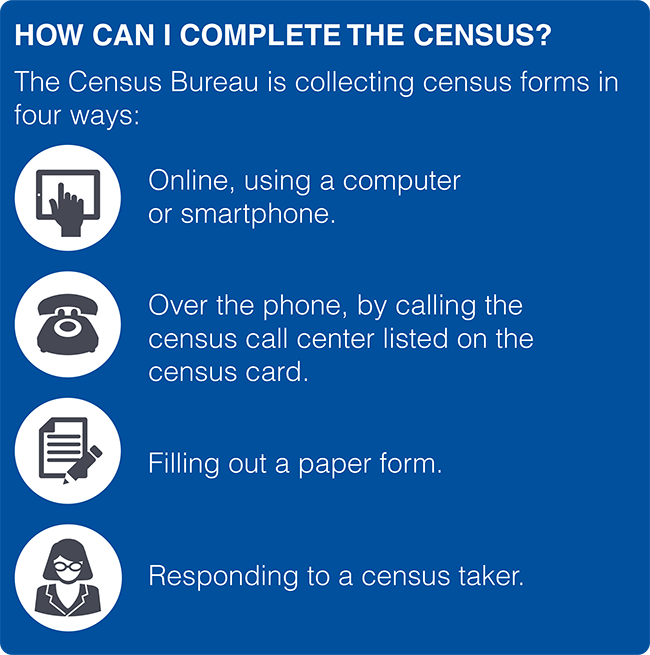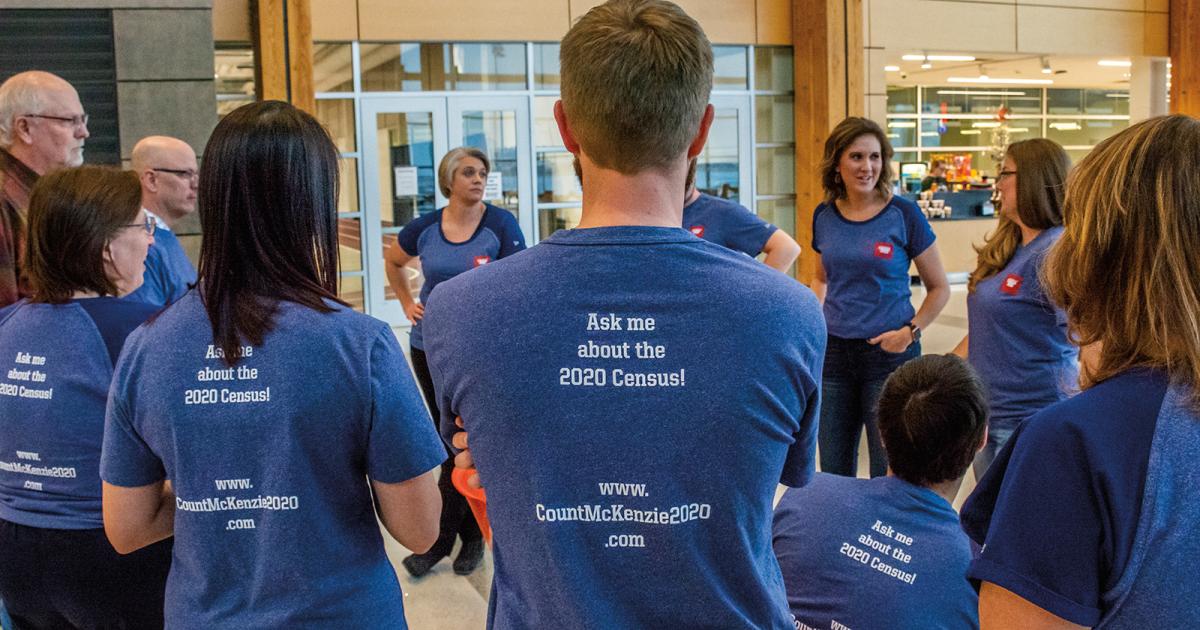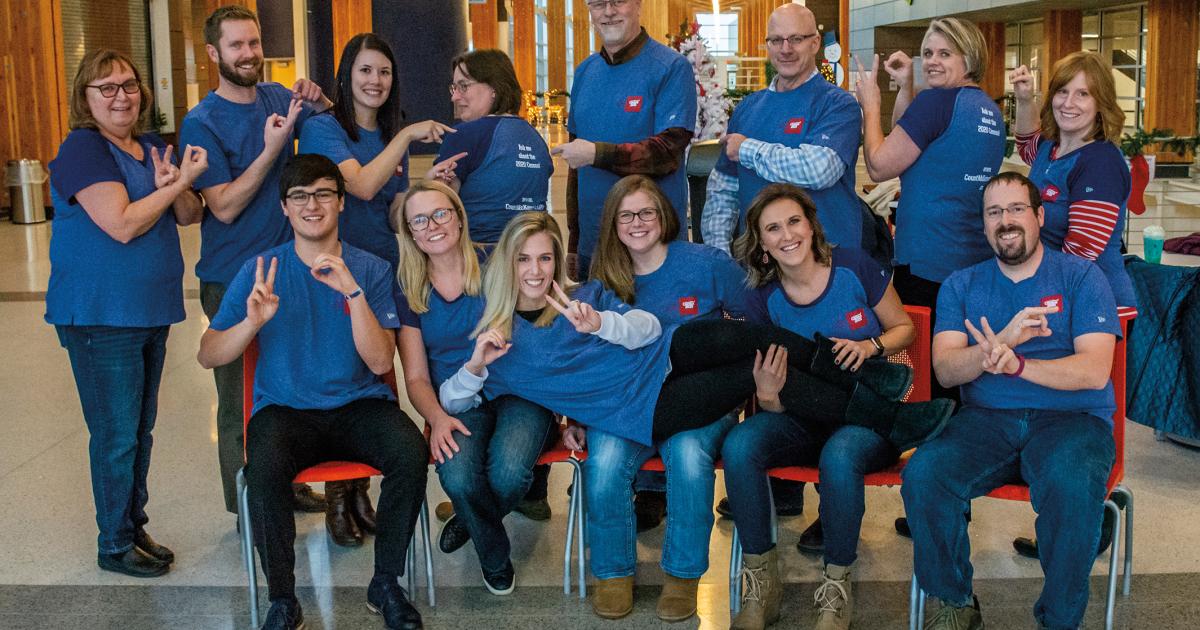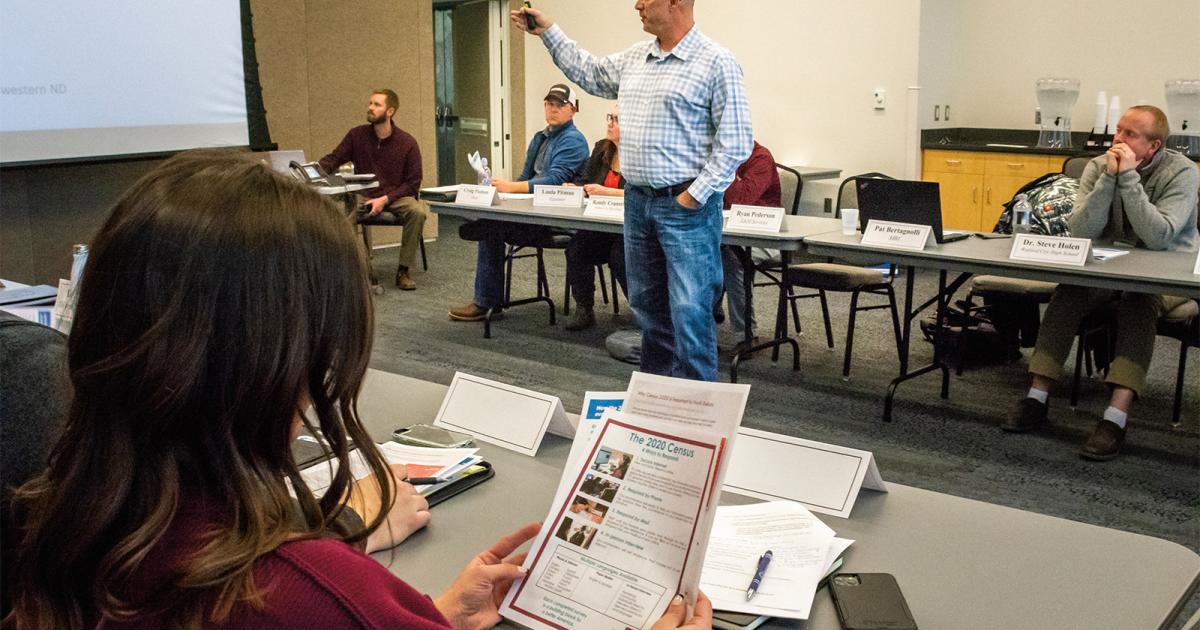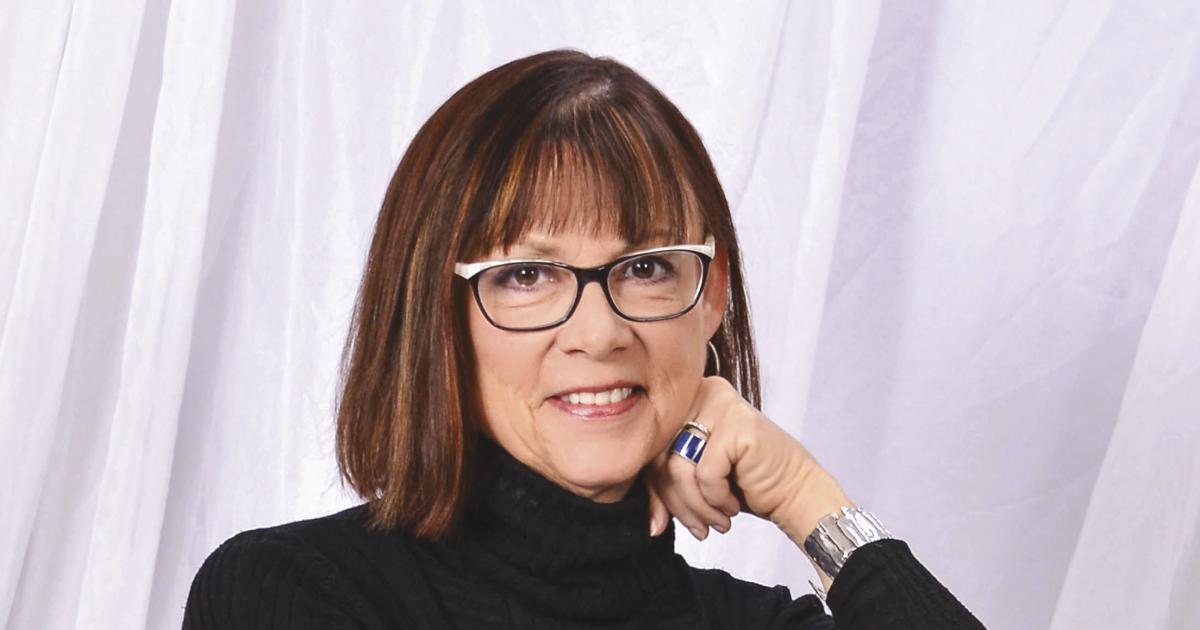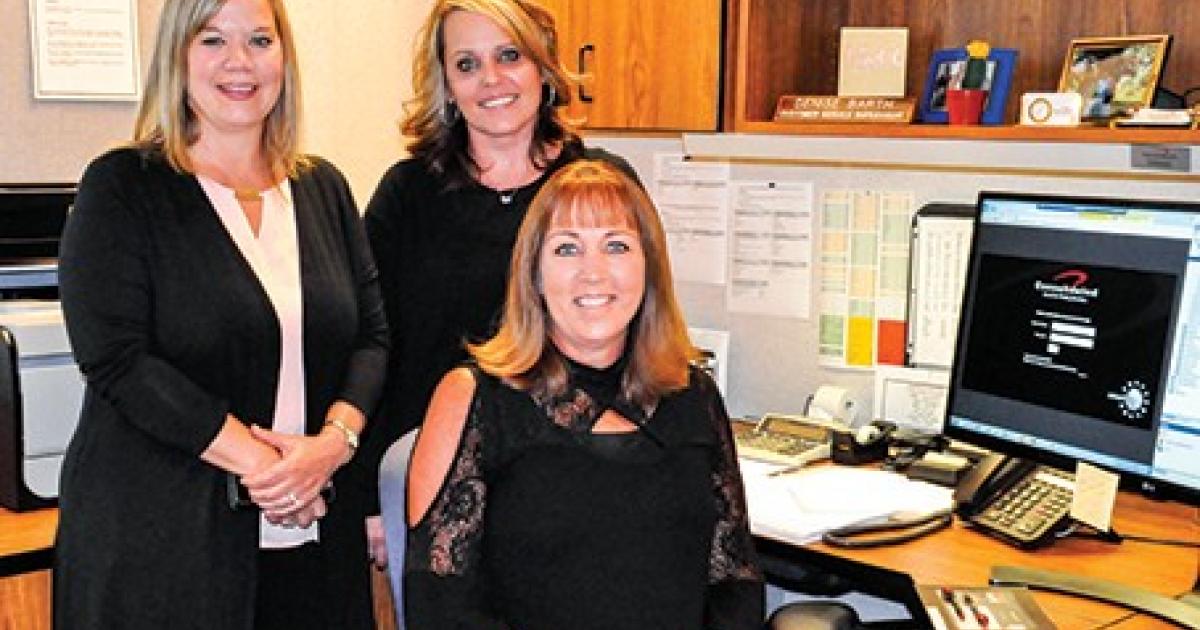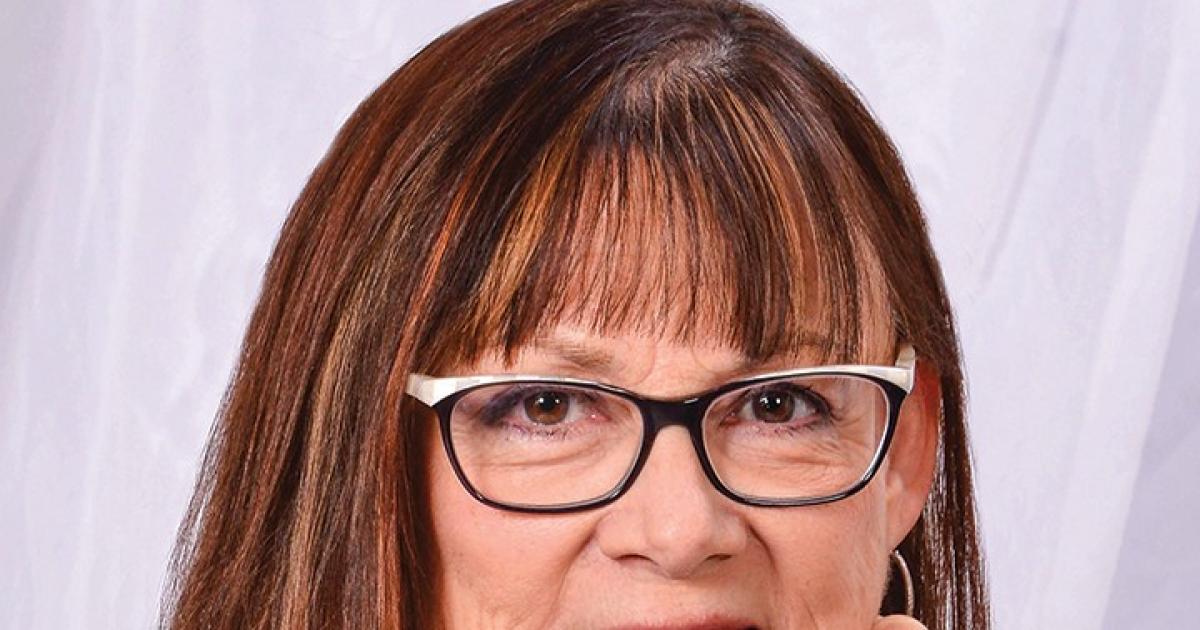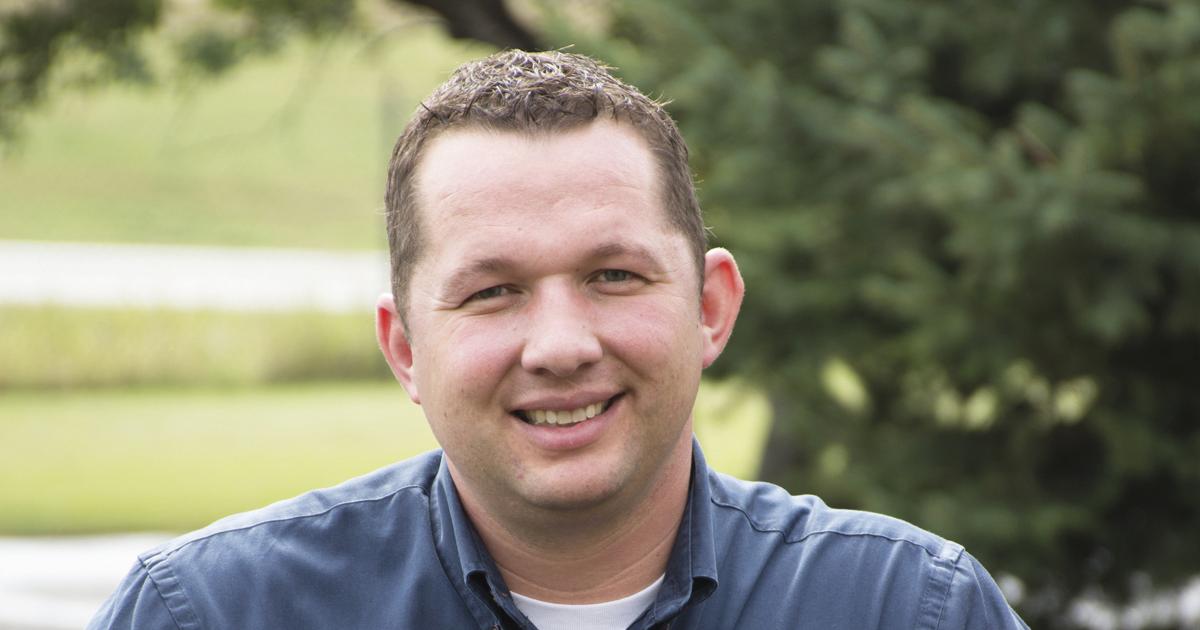Oil rigs, semitrucks, hard hats and work boots. Those are sights one would expect to see in McKenzie County, the largest oil-producing county in the United States, situated in the heart of western North Dakota’s Bakken Formation. If you were to take a closer look, past the hustle and bustle characteristic of this place and its transient population, one may be surprised to find a groundswell of something far different than Bakken crude: local unity, local strength and local pride.
Members of the Watford City/McKenzie County Complete Count Committee (CCC) wear matching T-shirts on Wednesdays to create awareness about the 2020 Census, which is part of a community-wide effort to ensure an accurate population count.
“If there is an issue or something to solve in Watford City, we look at things from a community standpoint,” says Pat Bertagnolli, vice president of human resources with MBI Energy Services.
This sense of community that defines Watford City and greater McKenzie County has brought a group of area leaders together to put the local face on a federal constitutional mandate. The mandate is a decennial count of the population, and the 2020 Census is here.
COMPLETE COUNT COMMITTEE
To accomplish an accurate count of their community, Watford City and McKenzie County have formed a Complete Count Committee (CCC). CCCs are charged with increasing awareness about the 2020 Census and encouraging local residents to respond.
“The goal is to completely count everybody, once, in the community,” says Vawnita Best, co-chair of the Watford City/McKenzie County CCC and community development director for Watford City. “The CCC helps explain the local benefit of participating in the federal census.”
Census participation impacts local communities. North Dakota receives more than $1.8 billion each year in federal funding through federal assistance programs, including Highway Planning and Construction, National School Lunch Program, Head Start, Medicare, Low Income Home Energy Assistance Program (LIHEAP) and Supplemental Nutrition Assistance Program (SNAP), based on census-derived statistics. According to figures provided by the N.D. Census Office, missing one resident in the population count equates to $19,100 lost over a 10-year period.
For Watford City, 2020 also offers a chance to make things right, which might explain the energy, resources and excitement being expended on the census effort there. Watford City was significantly undercounted in the 2010 Census, which recorded the population at around 1,700.
“We know that we’re between 8,500 and 9,000. Locally, we lost out on funding to improve our roads, schools and infrastructure. The state lost out on these dollars, too,” Best says.
The 2010 Census undercount in Watford City, then, potentially cost the state and locality nearly $139.5 million.
“That money has to be made up somewhere, often in your property taxes,” Best says.
“It’s huge to get the census right, because it has a 10-year life cycle. If they get the census wrong in your area, you suffer for that entire decade,” says Kevin Iverson, manager of the N.D. Census Office.
GETTING THE CENSUS RIGHT
“The conceptual part is easy – you have to count everyone. But the hard part is that you have to count everybody,” Iverson says.
Iverson identifies seven “hard-to-count” populations, or unique segments that present challenges to obtaining an accurate count, in North Dakota: American Indians, Bakken workers, retired snowbirds with more than one residence, federal military who are legal residents elsewhere, college students, recently arrived immigrants and frontier counties (six persons or less per square mile). By missing 904 American Indians on reservations in the 2010 Census, for example, North Dakota missed out on more than $17.5 million in federal funds.
Inaccurate counts can be tied back to individual participation in the census. Folks less likely to participate, Iverson says, often fall into four categories: hard to locate, hard to contact, hard to interview or hard to persuade. Examples include people experiencing homelessness, those suspicious of the government or individuals with language barriers. People who are in poverty or those in smaller, more rural communities, Iverson says, are also less likely to respond.
“Some are concerned with getting in trouble or breaking a rule, and some think that information is simply none of your business,” Iverson says.
Despite these individual concerns, Iverson says the Census Bureau prides itself on maintaining privacy and confidentiality. Census data is protected by Title 13 of the U.S. Code. Violators are subject to fines and imprisonment.
“The ‘Holy Grail’ to the Census is the data. The Census Bureau does not share data outside of the bureau,” Iverson says.
“Census data is protected by even more layers of encryption and safety than your online banking system,” Best says. “Information is strictly used to determine congressional representation and state distribution of dollars.”
When it comes to easing participatory concerns, the CCC approach has proved critical.
“The local, trusted voices on the Complete Count Committees explain that the process is safe, and explain the history of confidentiality,” Iverson says.
And they’re determined to get it right.
State and local efforts have been underway this past year to support the 2020 Census goal of an accurate count. Gov. Doug Burgum formed North Dakota’s Census 2020 Complete Count Task Force to be the voice of the state on census matters, and to assist the Census Bureau in finding enumerators and mobilizing the local effort.
Additionally, the N.D. Legislature appropriated $1 million to support 2020 Census awareness efforts.
WILL YOU?
“We all want the same thing, to make our communities better,” says Bertagnolli, who serves as co-chair of the state task force’s Business and Labor Subcommittee.
That sentiment ripples down through the local grassroots level of 2020 Census efforts. McKenzie County, where Bertagnolli lives, has been committed to community outreach, disseminating information at various events, recruiting census takers and assisting with statewide messaging to the Bakken area. On Wednesdays, Watford City/McKenzie County CCC volunteers even dress alike, sporting T-shirts that exclaim: “Ask me about the 2020 Census!”
The passion volunteers have for their community permeates into exuberance for the census. Because in Watford City and McKenzie County, they know what’s at stake.
“What’s unfolding now in this decade is more than what we’ve experienced in the last century,” Best says, noting that Watford City has grown by 274 percent from 2010 through 2017 alone.
With eyes on their local community, McKenzie County will do their part to ensure an accurate 2020 Census count. Will you?
Cally Peterson is editor of North Dakota Living. She can be reached at cpeterson@ndarec.com.
WHAT IS THE CENSUS?
• The census is a count of all persons living in the United States that is conducted every 10 years by the federal government and is required by the U.S. Constitution.
• It is used to determine the number of seats each state has in the U.S. House of Representatives, how federal and state legislative districts are redrawn and the appropriation of federally funded programs. One missed North Dakota resident equates to $19,100 lost over a 10-year period.
• The goal of the 2020 Census is to count everyone, only once, and in the right place. Even if someone is a legal resident of another state, they should be counted wherever they live and sleep most of the time. Local examples include Bakken workers, military and college students.
WHEN WILL THE 2020 CENSUS BE CONDUCTED?
• Census Day is April 1. Data collection will begin on March 12 and continue through July.
• Households will receive a postcard with instructions for completing the census beginning in March 2020.
CENSUS JOBS AVAILABLE
Civic-minded individuals who care about their communities are needed to help in the enumeration for the 2020 Census. More than 1,000 workers will be needed in North Dakota. Positions include:
• Recruiting assistants | Travel throughout geographic areas to visit with community-based organizations, attend promotional events and conduct other recruiting activities.
• Census takers | Work in the field. Both day and night shifts available.
Visit www.2020Census.gov/jobs to learn more.
